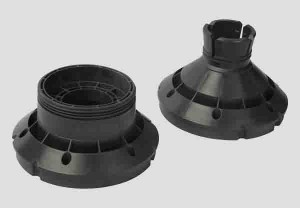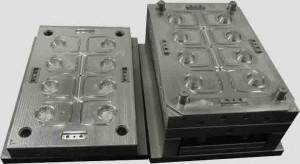Address
304 North Cardinal St.
Dorchester Center, MA 02124
Work Hours
Monday to Friday: 7AM - 7PM
Weekend: 10AM - 5PM
When to Use Hot Runner Systems
Hot runner (runnerless) systems are seeing more demand in today’s high-speed, high-volume molding operations due to higher material prices, a need to reduce cycle time, reduce scrap rates, and increase overall productivity and costs to manufacture, as compared to a “cold runner” system.
Particularly in applications in which regrind cannot be introduced (virgin resin only applications) back into the material to produce the parts, hot runner systems have an advantage in reducing the amount of material used as well as the amount of scrap created by the runner system.
In the book, “What Is A Mold?” produced by Tech Mold Inc., a Tempe, AZ-based mold manufacturer, it says that a “hot runner system is used to eliminate or lessen the use of runners which must be removed from an injection mold with the molded parts. If runners are eliminated, the point of entry to the mold cavity (gate) will have a hot drop (nozzle) suspended in the gate area. This is necessary to retain controlled heat sufficient to promote continuous moldability in the drop area directly adjacent to the mold cavity.”
Tech Mold explains that the system has “a manifold suspended behind the drops” that is electrically heated, “as are the drops, in order to contain heat in the hot manifold assembly. The system is also suspended so as not to transfer unwanted heat into the rest of the mold. The mold itself is designed to dissipate heat in order to solidify the molded parts as quickly as possible to lower cycle times.”
Hot runner technology is becoming a “fully-accepted” and indeed the preferred method of gating many multicavity molds, says Bruce Catoen in his new book, “Selecting Injection Molds”. “They are replacing more and more of the older runner methods especially the 3-plate systems. In fact, older, existing 3-plate molds can often be quite easily rebuilt into hot runner molds.”
Catoen notes in his book that “Today, there are many well-established companies specializing in hot runners, who sell either the basic hardware (manifold, nozzles, heaters, etc.) or assembled hot runner systems, complete with all associated plates and other hardware ready to be joined to an otherwise complete mold built by the mold maker. All that is required for a purchase order is to specify the important interface dimensions and any production data such as plastic to be used and the mass of the product. These hot runner suppliers mass produce  the hardware items and use specialized methods and equipment to produce better quality system parts at lower costs. Such hot runners [systems] are then guaranteed to work in the new mold and eliminate the need for the mold maker to experiment and waste time and money trying to get a “home made” system to work.”
the hardware items and use specialized methods and equipment to produce better quality system parts at lower costs. Such hot runners [systems] are then guaranteed to work in the new mold and eliminate the need for the mold maker to experiment and waste time and money trying to get a “home made” system to work.”
While hot runner systems are typically used on large, multi-cavity molds (32-cavity and up), many companies are choosing to put hot runner systems on smaller multicavity molds (8- or 16-cavity) because of the increased productivity and reduced scrap.
Catoen writes that “In some molds, often for smaller products with a large number of cavities, but also with larger ones, a combination of cold and hot runner systems can be of great advantage.
* It can eliminate a large portion of the cold runner and thereby significantly reduce the mass of plastic to be reground or lost.
* There is much less pressure drop between the machine nozzle and the gates, because the pressure drop in the hot runner manifold is smaller than in a (long) cold runner.
* It can be used when very small cavities cannot be located very close to each other, as a “pitch” (distance) for which there are no standard-spaced hot runner nozzles available, or where it is not possible or practical to use hot runner gates. Typically, a cluster of 2-6 (or even m ore) very small products can be gated from a small runner or a disk, which is fed from a hot runner drop.
* It will shorten the cycle time. Large distributing (cold) runners take much longer to cool than the final runners feeding the cavities. Especially if the products cool rapidly, such heavy runners significantly slow down the molding cycle. The cold runner portion in such cases can be treated as any cold runner mold; it could be a 3-plate arrangement (rarely used) or a 2-plate system with edge or tunnel gates in the product.”
Tech Mold’s book lists some of the advantages of a hot runner system vs. a cold runner system:
• No runners to separate from the molded parts.
• No runners to either dispose of or regrind and
reprocess with the possibility of introducing contamination into the virgin material if being mixed with virgin.
• Hot drops carry consistent heat at processing temperature directly into the cavity.
• Cooling time for thin sectioned parts is shorter due
to the absence of thicker, longer cycle-dependent runners.
• No need to provide robotics for runner removal.
• Plasticized material (shot size) is reduced by the runner weight.
• Lower injection pressures may be realized during
packing stages due to heated gate areas in hot runner systems.
• Less clamping pressure required versus two plate cold runner molds
• Sprue sticking and nozzle freeze-off associated with cold runners is eliminated.
• A cleaner molding room can be realized without dealing with regrind, an advantage particularly in clean-room molding environments.
 While hot runner systems typically add somewhere in the range of $40,000 – $60,000 to the cost of the mold, the advantages of using a hot runner system provide fairly fast payback in the right mold. However, Catoen writes, “There are still some molds for which the advantages cannot be justified economically, especially for low production items. In these cases, the older systems, especially cold runner 2-plate molds are still much in use.”
While hot runner systems typically add somewhere in the range of $40,000 – $60,000 to the cost of the mold, the advantages of using a hot runner system provide fairly fast payback in the right mold. However, Catoen writes, “There are still some molds for which the advantages cannot be justified economically, especially for low production items. In these cases, the older systems, especially cold runner 2-plate molds are still much in use.”
If the OEM believes that they have an application that might be suitable for a hot runner system, they should consult with a mold manufacturer that is experienced in producing molds with hot runner systems. Most of the AMBA member companies build hot runner molds for customers in a variety of industries, and can help the OEM determine if the application will benefit from a hot runner system.